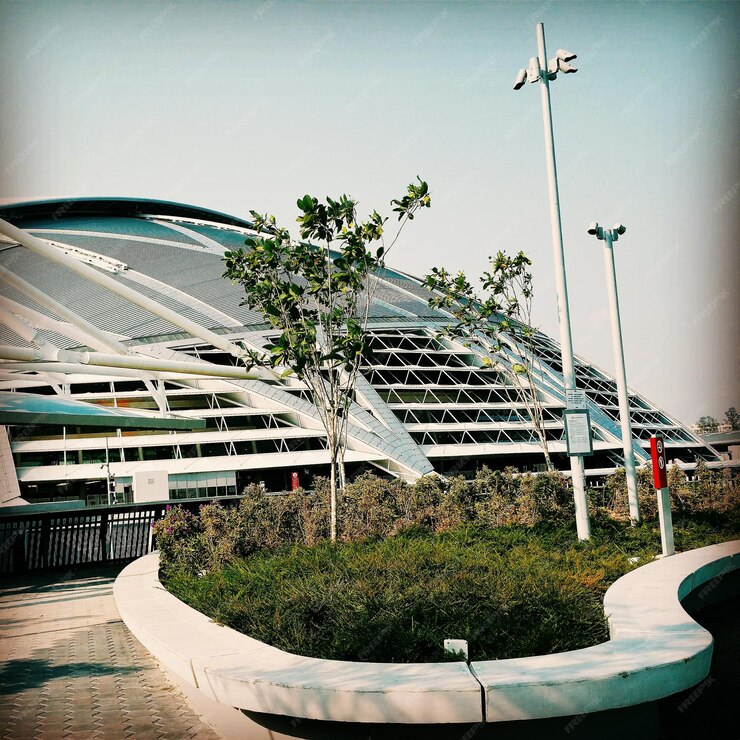Sustainable infrastructure has become a foundation of contemporary civil engineering development. With the increasing situation of embarking on environmental problems such as climate change, shortage of resources, and urbanisation, engineering methods elsewhere have shifted towards greener applications. By incorporating endurable practices, civil engineers strive to develop, build, and support infrastructure that satisfies present needs without compromising the power of future generations to meet their own. This article discusses basic issues in the context of tolerable infrastructure and focuses on the assistance of materials science, energy engineering and electrical and electronics engineering to achieve it.
AIMS AND SCOPE OF SUSTAINABLE INFRASTRUCTURE
Sustainable infrastructure includes a variety of infrastructure, such as transportation network, water supply network, energy grid, and building, etc. Broadly, the goal is to reduce environmental liability in order to achieved maximum economic and social returns. This involves:
- Reducing carbon emissions during construction and operation.
- Improving energy efficiency and renewable energy generation.
- Promoting the use of eco-friendly and durable materials.
DEVELOPING INFRASTRUCTURE THAT IS ADAPTED TO CLIMATE CHANGE AND NATURAL DISASTERS
Civil engineering works that apply these principles have been an important vehicle in the efforts to meet objectives of sustainable development set forth by international agencies. Sustainable infrastructure is not limited to environmental returns, but also promotes social inclusiveness, and economic development through equitable delivery of basic services.
MATERIALS SCIENCE: THE BACKBONE OF SUSTAINABLE INFRASTRUCTURE
Materials science has transformed the competition for civil engineers about sustainability. Innovations in this area have led to the evolution of materials that are not only more powerful and more durable but also environmentally pleasant. Examples include:
- Recycled Materials: Introduction of recycled concrete, steel, and asphalt not only decreases demand for virgin materials but also helps conserve natural resources and save energy.
- Geopolymer Concrete: Sustainable replacement to conventional Portland cement, geopolymer concrete dramatically lowers the production greenhouse gas emissions.
- Biodegradable Plastics and Composites: These materials are employed for temporary facilities and temporary infrastructure elements and provide for low environmental impact when the use cycle of these materials concludes.
- Self-Healing Materials: Advancements in nanotechnology have allowed the invention of materials qualified for fixing damages and harms autonomously, prolonging the lifespan of infrastructure and reducing upkeep costs.
The development of materials science plays a major role in the planning of constructions able to resist the impacts of the environmental changes and minimize their ecological footprint.
ENERGY ENGINEERING: POWERING SUSTAINABLE INFRASTRUCTURE
Energy engineering is at the heart of building infrastructure that, in turn, is driven on reliable and clean forms of energy. Thanks to the spreading of renewable energies technologies, today civil engineering projects can now incorporate:
- Solar Panels and Photovoltaic Systems: Such systems are being increasingly deployed on roofs, bridges, and highways to capture solar energy and decrease consumption of fossil fuels.
- Wind Energy Systems: Civil engineers build the wind turbines and supporting framework to produce electricity where suitable winds can generate power.
- Energy-Efficient Building Systems: Cutting-edge insulation materials, smart windows, and HVAC (heating, ventilation, and air conditioning) techniques greatly reduce energy consumption in structures.
- Hydropower Systems: Sustainable designs for dams and water turbines preserve efficiency of energy generation and minimize ecological disturbance.
Through an emphasis on energy efficiency and renewable energy resources, energy engineering contributes toward the objectives of sustainable infrastructure towards greener cities and communities.
THE ROLE OF ELECTRICAL AND ELECTRONICS ENGINEERING
Electrical and electronics engineering (EEE) and civil engineering interact to enhance the implementation and durability of infrastructure. Modern green solutions rely heavily on smart technologies and automation, which are made possible through advancements in EEE. Key contributions include:
- Smart Grids: These grids improve electricity supply, minimize energy losses and integrate renewable energy in an easy way.
- Sensor Technology: Sensors are used to track the structural integrity of bridges, buildings, and roads detecting problems like stress, corrosion, and cracks much earlier in the process.
- LED Lighting Systems: Energy-saving lighting technologies decrease electricity use in cities (streets, public areas, buildings).
- Electric Vehicle (EV) Infrastructure: Charging stations and transit powered by renewables are both contributing factors to the shift to sustainable transportation.
EEE enables the integration of intelligent systems into civil engineering projects, making infrastructure more adaptive, efficient, and environmentally conscious.
CHALLENGES AND FUTURE DIRECTIONS
Although great advancements have been made, issues continue to exist in the practices of implementing sustainable infrastructure solutions. High upfront costs, absence of standardization, and difficulty changing are some of the usual roadblocks. Additionally, the level of interdisciplinary knowledge integration from materials science, energy engineering, and EEE—with the involvement of a wide range of researchers—demands close cross-disciplinary integration.
Looking ahead, innovations such as carbon capture technologies, smart cities, and sustainable urban planning models hold promise for further advancing the field. Schooling and sharing of facts will be vital in training the next generation of engineers to respond responsibly to these challenges.
CONCLUSION
In summary, sustainable infrastructure is not only an aspiration, it is a need for a resilient, strong and prosperous tomorrow. By leveraging advances in materials science, significance engineering, and electrical and electronics engineering, civil architects can design systems that address environmental problems while enhancing the quality of life. In the context of global increases of urbanization and and climate change, a transdisciplinary perspective is essential in order to guarantee the success of green civil engineering solutions. Collectively these work lead to a better sustainable, fair and environmentally responsible world.

